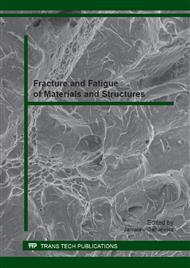p.32
p.39
p.45
p.51
p.57
p.63
p.69
p.75
p.81
Damage Size Estimation of the Aircraft Structure with Use of Embedded Sensor Network Generating Elastic Waves
Abstract:
One of the approach to develop a system of continues, automated monitoring of the health of the structures is to use elastic waves excited in a given medium by piezoelectric transducers network. Elastic waves depending on their source and the geometry of the structure under consideration can propagate over significant distance. They are also sensitive to local structure discontinuities and deformations providing a tool to detect local damage of large aerospace structures. In the paper the issue of fatigue crack growth monitoring by means of elastic guided waves actuated by a sparse array of sensors will be presented. In particular we propose signal characteristics, robust enough to detect different kinds of damages: Barely Visible Impact Damages (BVIDs) in composite materials and fatigue cracks of metallic structures. The model description and the results of specimen tests verifying damage detection capabilities of the proposed signal characteristics are delivered in the paper. Some issues concerning the proposed damage indices and its application to damage detection and its monitoring are also discussed.
Info:
Periodical:
Pages:
57-62
Citation:
Online since:
January 2014
Price:
Сopyright:
© 2014 Trans Tech Publications Ltd. All Rights Reserved
Share:
Citation:


